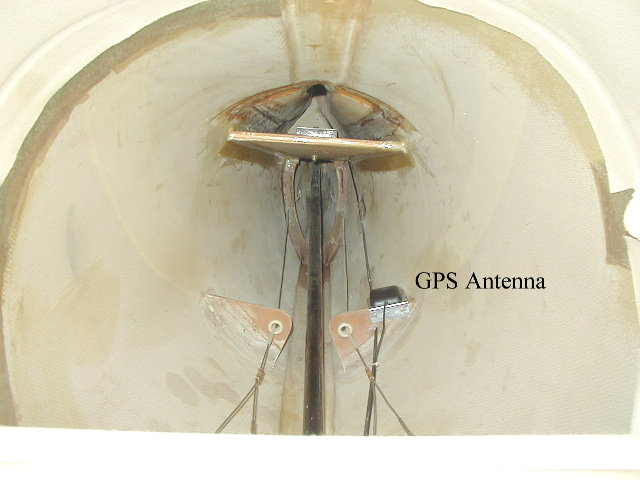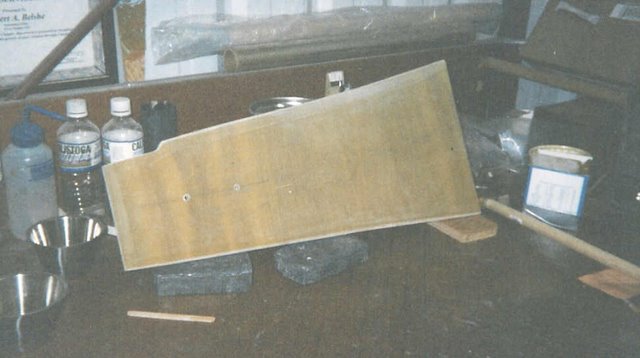|
When I modified my 235
to an IO320 engine in 1968, I added a horizontal rib to stiffen the
tail. It is
wedge shaped about 2 feet long and sits at the height of the stabilizer and
butts against the little bulkhead back there. There is a natural "ledge" on each side
where the vertical fin
attaches to the fuselage. The rib is shaped to
fit this ledge and anchored with hysol and 3bid tapes top and
bottom.
This was done on the advice of Ray Modert who made this
modification after one of his friends reported some serious "buzz" in the tail
at 220 mph. The rib is 1/2" plywood with 3 bid on each side. Sitting on the rib
is a 12 lb chunk of lead, which balances the extra 40 lb. of engine and
propeller weight. I think I'm still a little nose heavy, but not enough to cause
any problem bringing the nose up to flare at 75 kts. My new empty weight is
1035, up from 970.
If you apply a torsional load to the tail section by
pushing down on one end of the
stabilizer, you can see that it is not real stiff, torsionally. A whack on the vertical fin or
stabilizer would produce a noticeable vibration.
I made a crude
measurement of before and after torsional strength by putting a lead brick
on the outer end of the stabilizer and measuring the deflection. .
I have attached a note which describes the
test
The rib installed, looking back into the
tail. This was all done from the inside, with difficulty.
I made some bid tapes which go down each side,
top and bottom. You can see the lead weight
sitting on top of the rib back there.
|
|
|
|
|
|
|
|
|
Here is a picture of the
rib before installation. It is 1/2" marine plywood with 3 BID
on each side.
I made a piece of
foam with bondo on the edges which I pushed back there to determine the
shape.
|
|
|
|
|
|
3 of 3:
C:\Pictures\Flight\N19BJ\Airframe\theRib.jpg
|
| |

ATT00079.jpg

ATT00085.jpg
|